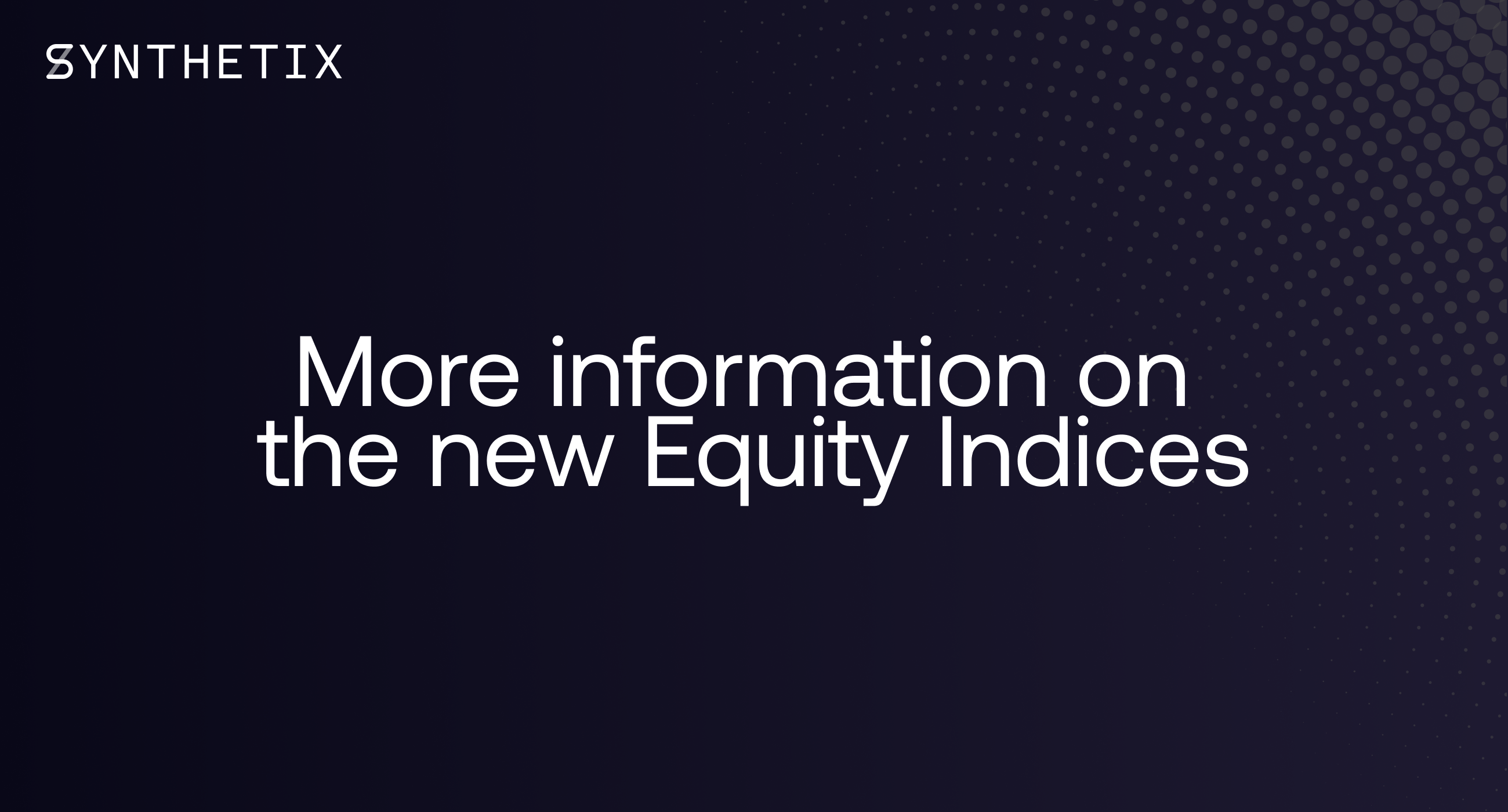More Information on the new Equity Indices
Further details about the new equity index Synths

A few weeks ago the Synthetix community requested Chainlink provide price feeds for a new asset class: synthetic equities. A poll was then conducted in Discord to determine the assets to include in the Hadar release. As with all new launches, the community will be monitoring the demand and performance of these new assets to determine whether to expand this offering. The first two indices to be added are the FTSE 100 and the Nikkei 225. The FTSE is the main index of the London Stock Exchange and the Nikkei represents major equities on the Tokyo Stock Exchange.
There are several aspects to these assets that require special consideration within the Synthetix protocol, so these new Synths should be considered an MVP as we test out this new functionality.
The first consideration is that equity markets are closed on nights, weekends and holidays. This requires functionality halt trading in these Synths during market closures. For this MVP we will be utilising the new “pauseSynth” functionality launched in Hadar. This means these assets will be effectively locked and holders will not be able to trade into or out of them during closures of their respective stock markets, in addition they will not be transferable. With the full migration to Chainlink in an upcoming release, this functionality will be improved to allow transfers and exchanges using our Fee Reclamation mechanism to ensure any trades out of hours will be confirmed at the first price at market open during the next trading session.
The second consideration is that both of these assets are quoted in their respective national currencies: GBP (Pounds) for the FTSE, and JPY (Yen) for the Nikkei. Synthetix uses USD as the quote currency of all assets internally, so there were two options — convert the price from GBP/JPY into USD, or treat the index values the way some derivatives markets do and track the index but in USD. To illustrate the difference between these approaches take the Nikkei:
The last close of the Nikkei was 18,065.41. “18,065.41 what?” you might ask? Japanese Yen is the answer. This presents a problem for Synthetix, since we track the debt of each asset as USD, so in order to support sNIKKEI we would need to convert it from YEN to USD, which would result in a price of $168 USD. The issue with this approach is that displaying the index as $168 USD adds friction for someone trading the Nikkei who is used to seeing it quoted in Yen. The alternative we chose was to provide an index that tracks the Yen denominated value but priced in USD. So in this case the cost of one unit of sNIKKEI will be $18,065.41 USD. A USD denominated trader buying this index will have exposure to the performance of the index on a percentage basis without needing to factor in FX fluctuations, while from the perspective of the protocol tracking the total system debt does not require conversion from JPY to USD. The same mechanism will be used for the FTSE pricing it at $5454.57 USD rather than GBP.
The tradeoff with this approach is a GBP or JPY denominated trader or one who wants exposure to the FX risk will experience friction in being forced to trade these indices USD denominated. So if there is sufficient demand from the community we have the option of issuing a JPY denominated version of the Nikkei and a GBP denominated version of the FTSE. The advantage to these native currency denominated assets is a trader looking at the sFTSE/sGBP market will see the price as 5671.96 Pounds.
As always if you want to discuss further or have any suggestions for improvements to the system please join us in Discord.

